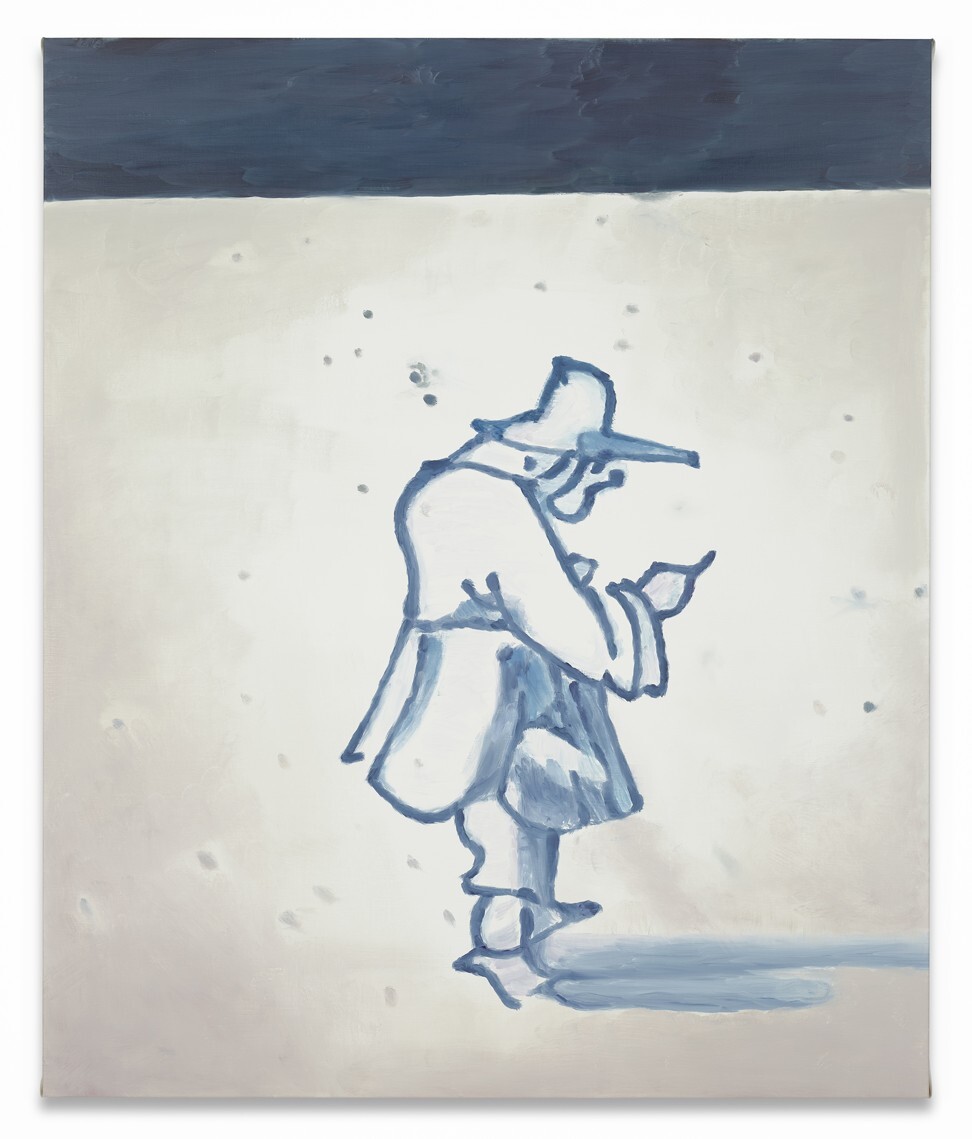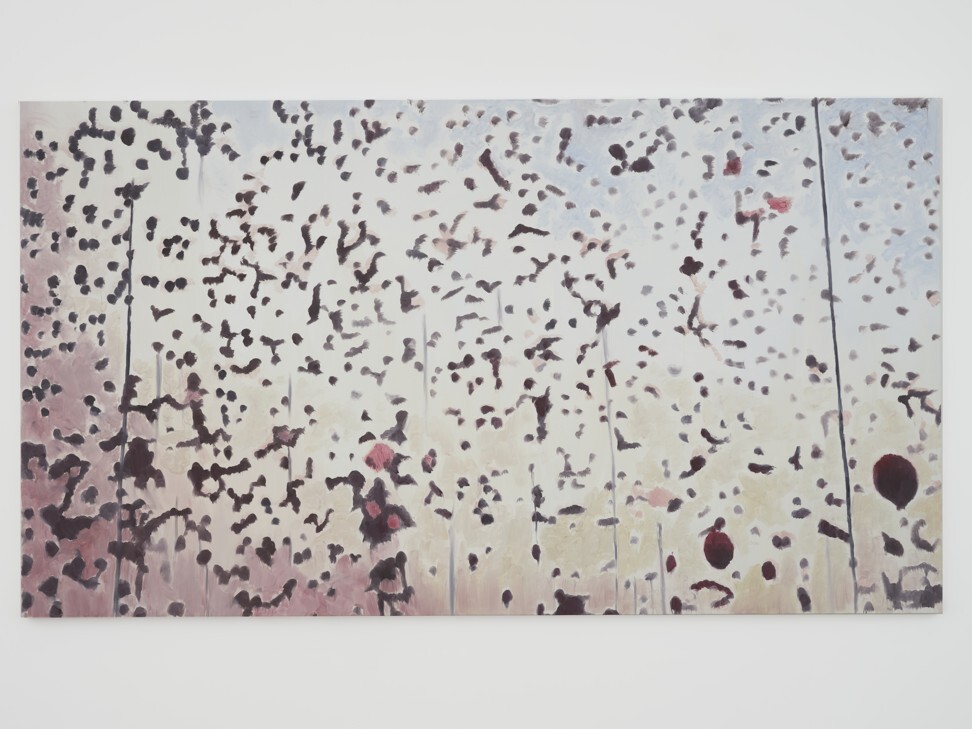
Belgian artist Luc Tuymans’ Hong Kong exhibition plays on ‘Made in China’, colonialism and global trade
- Titled ‘Good Luck’, Luc Tuymans solo show in Hong Kong is his first exhibition in China
- His paintings reveal the many layers of a scene and encourage viewers to question what they are looking at

Delftware was appropriated from China during the 17th century after Guido da Savino, an Italian potter living in the Netherlands, discovered how to produce cheap copies of Ming dynasty porcelain. Large-scale production took off, with the Dutch versions retaining the Chinese blue-and-white style while creating objects of a more European nature. Remarkably, these were then successfully exported to China.
Now a ubiquitous icon of Dutch aesthetics and culture, Delft tiles form the starting point of Belgian artist Luc Tuymans’ new exhibition in Hong Kong, his first solo show in China. The 17th century was a time of power and expansion for the Dutch East India Company and to Tuymans, Delftware is a potent symbol of the colonial mindset and global trade that he wishes to highlight.
“It’s an interesting irony,” Tuymans, 62, says over Zoom from his studio in Antwerp. “We usually think of ‘Made in China’ as things being made very quickly and of a lesser quality, but this was the other way around.”
The title of the exhibition – “Good Luck” – can be taken as an expression of sympathy or as sarcastic, the half-Belgian Flemish, half-Dutch artist says. “It can go both ways. It’s open-ended in the meaning – you can attribute what you want to it.”

Initially scheduled to open last November, when the US-China trade war dominated the news, the exhibition features works that not only introduce Tuymans’ practice to Hong Kong but also have strong regional resonance.
Tuymans is known for his ability to unravel complex histories and connect them with our present, while revealing a new dimension of painting through his signature liminal aesthetic.
Delft I, II and III (2019) is a triptych that depicts a slightly blurred, hatted European figure in blue and white. Based on a picture from an early Delft tile (all the artist’s work is based on pre-existing images ranging from photographs to film stills), the images allude to the role that trade played in colonial expansion and how that has evolved today.
I’ve always had a distrust of imagery, even of my own
The artist has often turned to globalisation and current affairs in his art. Some of his most well-known works include Secretary of State (2005), a portrait of the then US Secretary of State Condoleezza Rice, and Gas Chamber (1986). More recently, Twenty Seventeen (2017) – an image of a woman gaping in fear – accurately captures the angst of our time.
If the Delft series is an evaluation of the past, Tuymans shifts his focus to the future with Shenzhen (2019), another work featured in the Hong Kong exhibition. This painting depicts the urban landscape of the city as if it were a single frame captured from video, with the symbols for play, rewind and fast-forward painted across the canvas.
Tuymans says the suggestion of motion emphasises the idea of progress. However, the medium of painting itself shows how quickly such a scene can become “vintage”, he adds. This has to do with “the anachronism” of painting – a way of making art that is often seen as behind the times.

In fact, what his paintings do is to reveal the many layers of a scene and encourage the viewer to question what they are looking at. Painting is no longer out of date in his hand but relevant today, particularly as social media, fake news and digital dependency can mean that little is as it seems.
“I’ve always had a distrust of imagery, even of my own,” Tuymans says, deeming his works an “authentic forgery” because painting depicts a moment belatedly, unlike photography’s instantaneity.
Back in the 1980s, his questioning of painting as a medium prompted him to study filmmaking instead. That proved to be a critical turning point in his practice.
“A close-up doesn’t exist [in real life], so when you work with film, it changes your perspective,” he says.

His film background and interest in the moving image is especially amplified in Still (2019). This painting of an aged cowboy based on a scene from the film Mulholland Drive references the export of American culture, particularly through Western films.
The colours and emotions evoked by his paintings seem to come to life in Owl (2019), an animated film that he created for the Hong Kong exhibition. Lasting mere seconds, the film depicts an owl taking flight and speaks to the artist’s fascination with silent movies. Enamoured by the lack of sound with which an owls moves, Tuymans was inspired by the bird’s ability to surprise its prey, and the mythology associated with this predator as a symbol of wisdom and premonition.
By exposing the multiple meanings that a single image can contain, his practice is about showing what “reality” actually is. A proud countryman of legendary Realist painters like Jan van Eyck and Bruegel, Tuymans has in a way inherited this legacy while trying to forge his own place in art history.
“Good Luck” by Luc Tuymans, David Zwirner Hong Kong, 5-6/F, H Queen’s, 80 Queen’s Road Central, Hong Kong, Tue-Sat 11am-7pm. Until Dec 19.